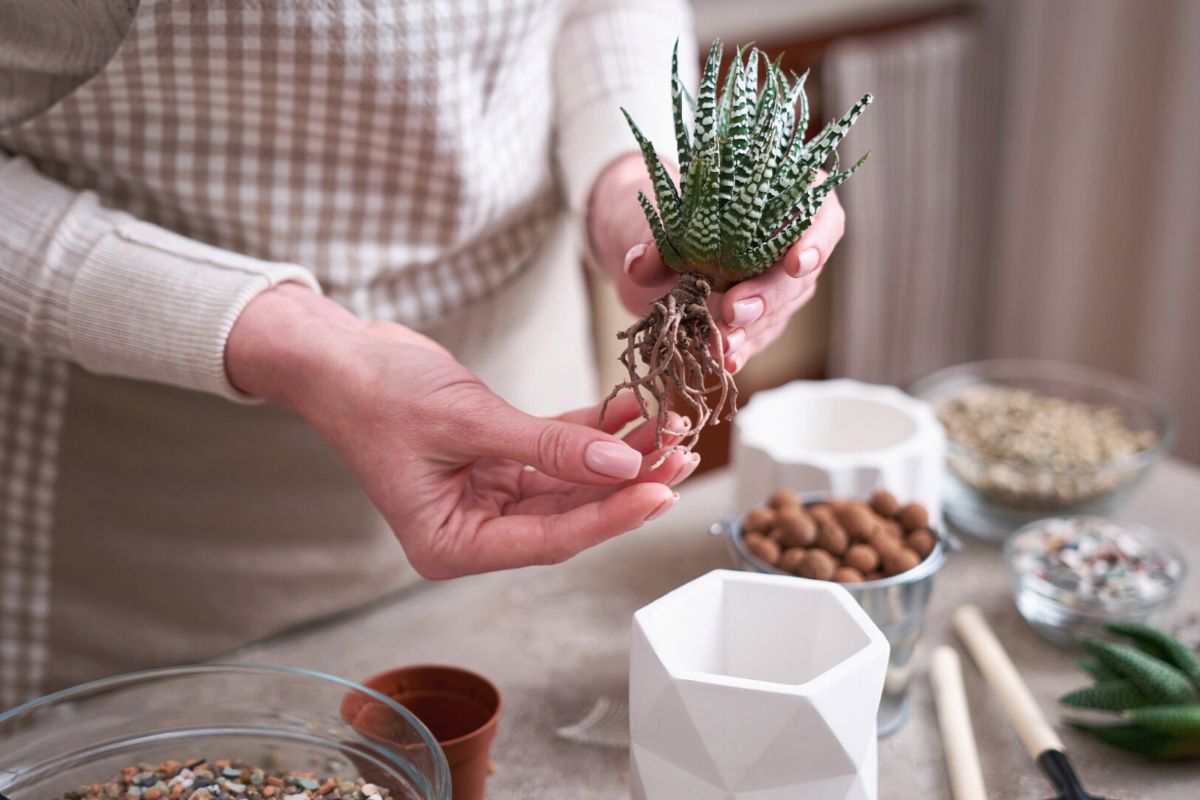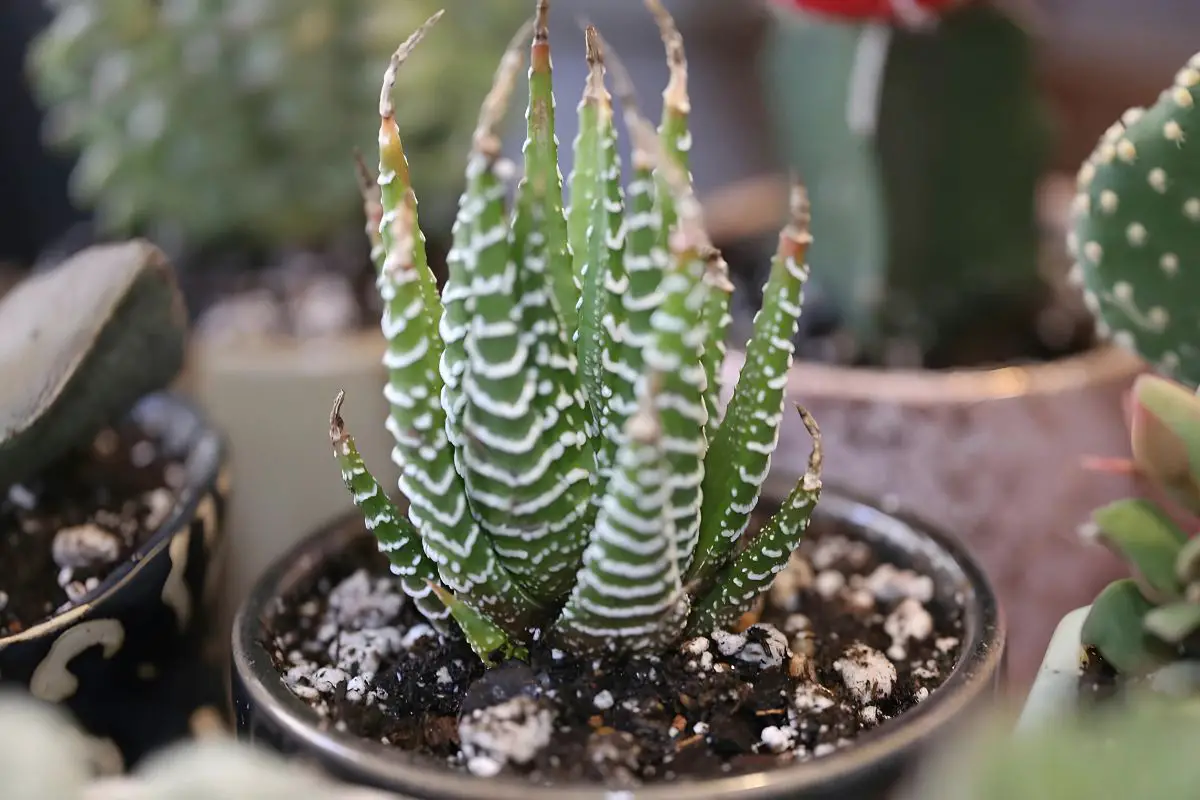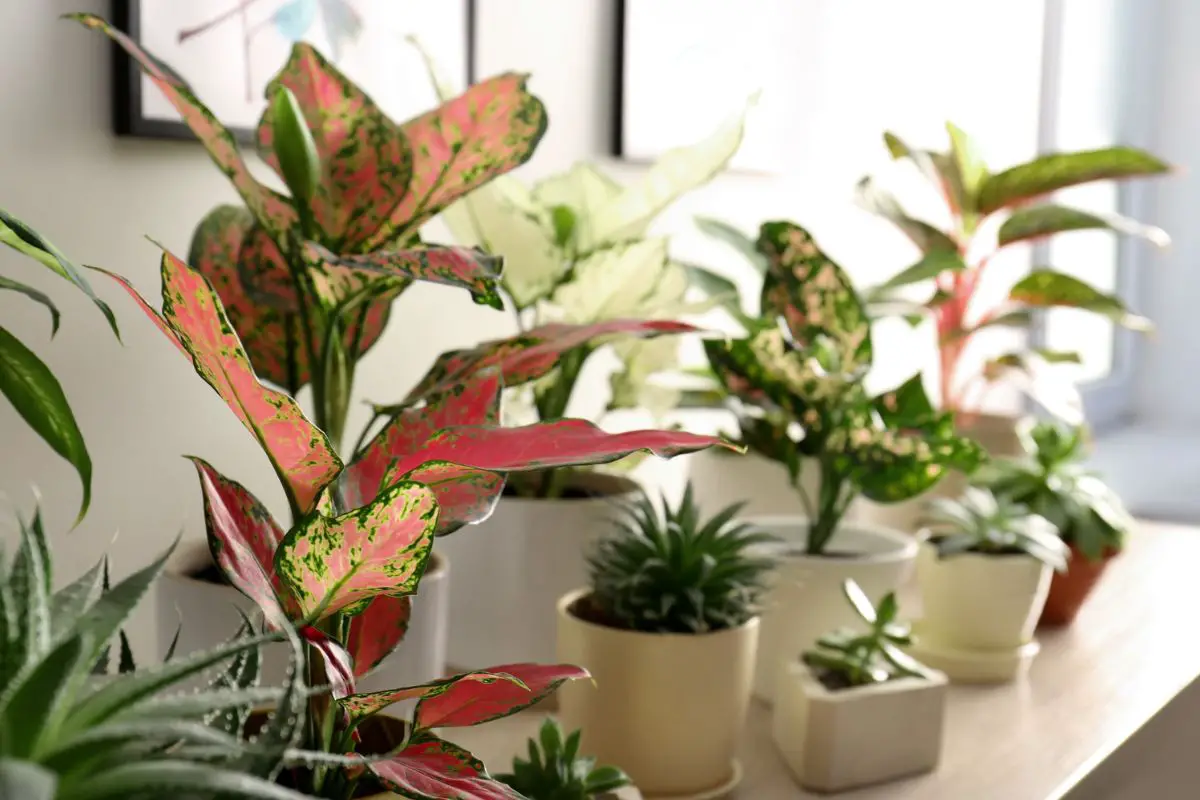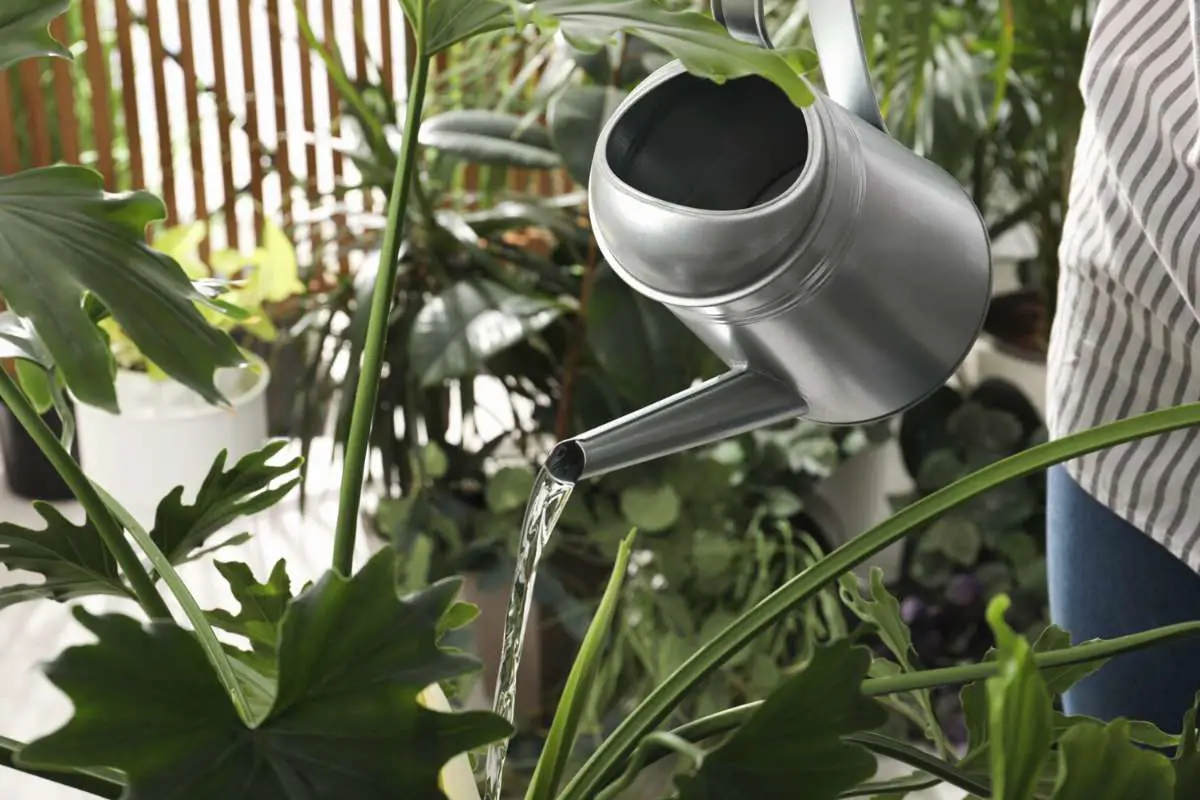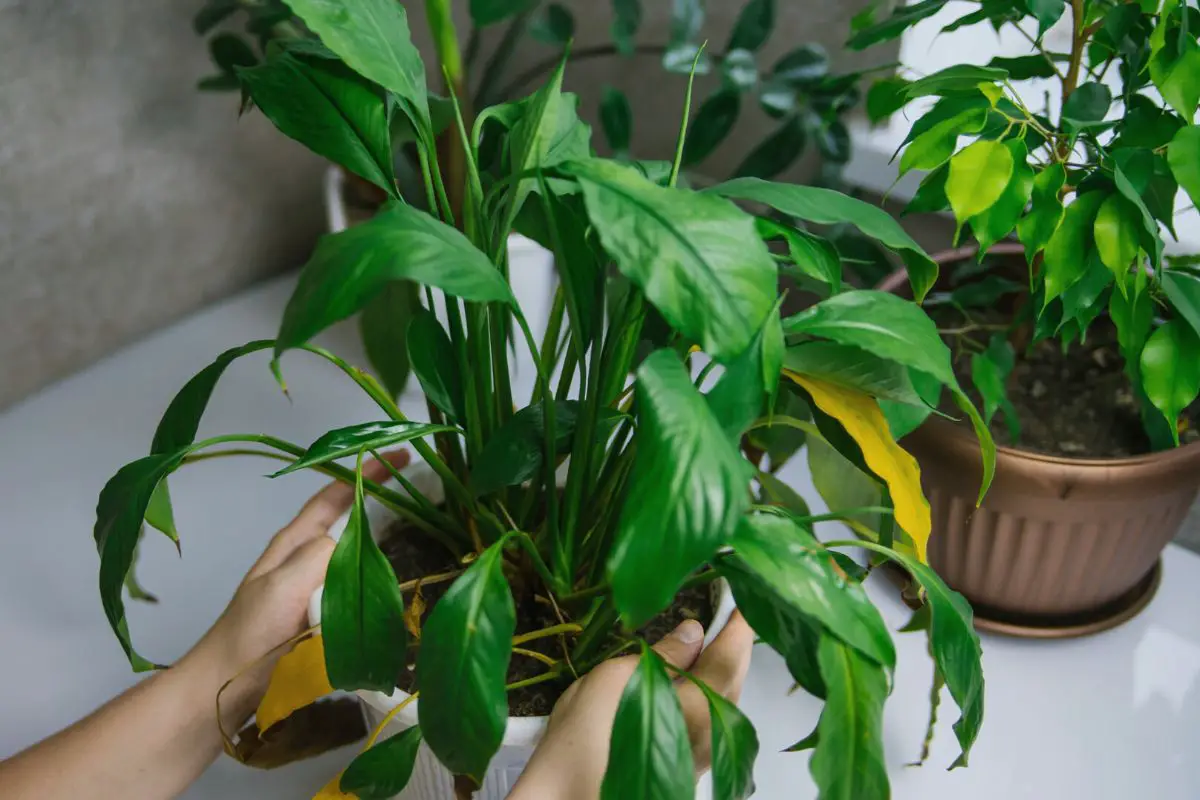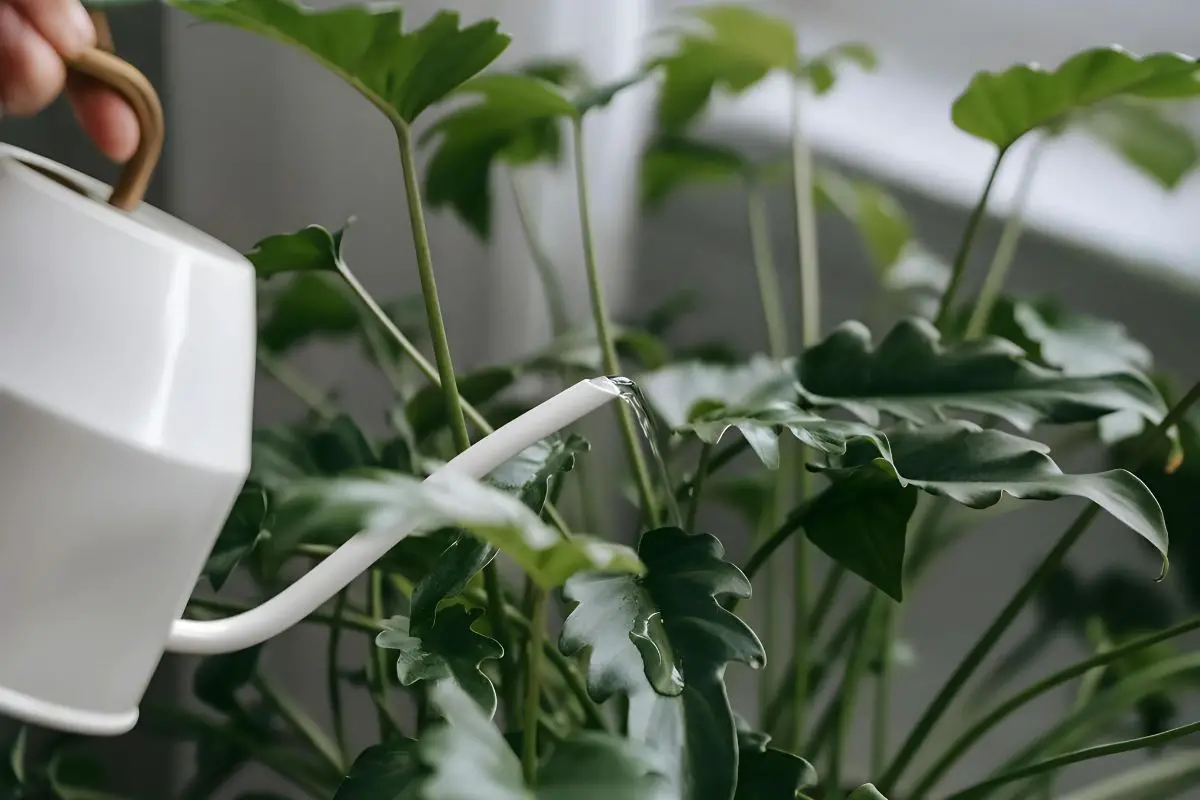Haworthias are low-maintenance succulents famous for their eye-catching green or reddish-brown foliage with white stripes or specks, depending on the species. They are resilient houseplants, but they’re not immune to constant neglect. If your plant is turning brown, finding the cause to restore its health and beauty is important.
The common causes for your Haworthia turning brown include:
- Intense sunlight
- Poor watering practices
- Poor drainage
- Incorrect pot size
- Pest infestation
- Improper fertilization
- High temperatures
- Frost damage
- Improper humidity
This article will discuss common reasons they turn brown, how to identify the root cause, and how to address the issue. By the end of this article, you’ll be equipped with the knowledge and practical tips to help your Haworthia recover!
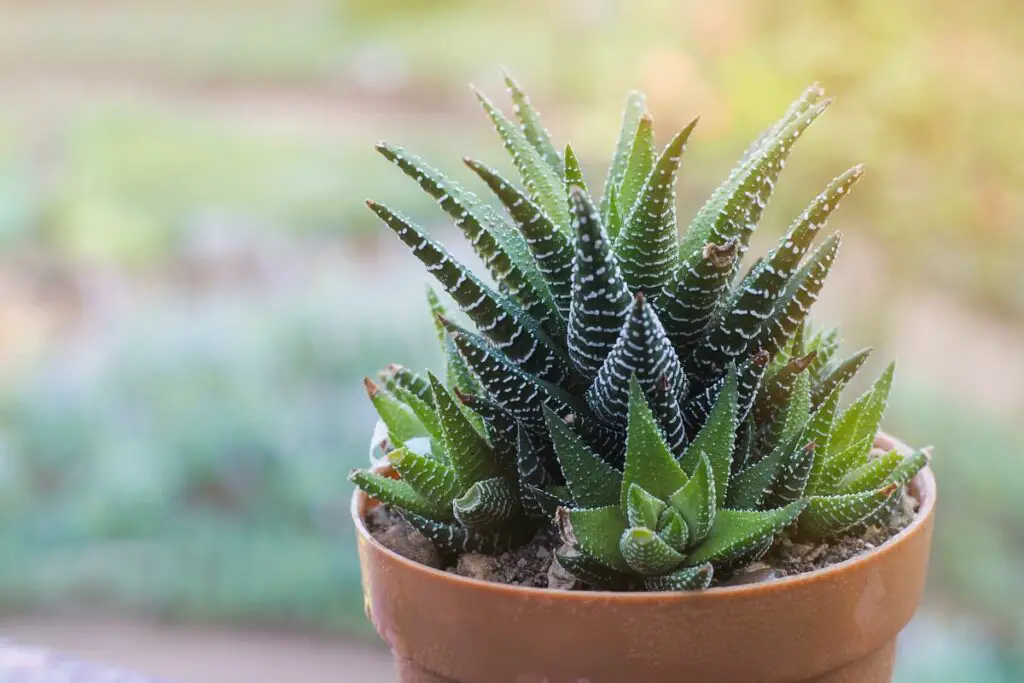
A Quick Overview
Originating from South Africa, Haworthia is a genus consisting of over 70 species with diverse appearances.
All members have plump, succulent leaves and are less than 2 feet (60 cm) tall. Some species have leaves with rounded or blunt edges and can be as short as 4 inches (10 cm) at maturity.
The most popular Haworthia plant for houseplant collectors is commonly called zebra cactus due to its white stripes or specks against dark green or reddish-brown, aloe-like foliage.
With proper care and even a bit of neglect, your Haworthia plant can live for several decades and produce numerous offsets or baby plants throughout its lifetime.
Common Causes and Fixes of Browning
Due to their simple care requirements and resilience, Haworthia succulents are often neglected. Thankfully, this plant will show signs of distress, such as the browning of the leaves, to help you address the issues sooner and save the plant.
Here are the common causes of browning:
Intense Sunlight
Haworthias have desert origins, making them sun-loving plants. In their native environment, these small plants bask in bright sunlight for part of the day and receive shade from taller plants or rocks.
That said, they can’t survive extremely hot and dry conditions for extended periods. The foliage will dry out, turn brown, and become crisp.
As a houseplant, Haworthias will grow vibrant leaves and live longer when they receive around 4 hours of direct sunlight daily. Any less, and the leaves will become paler, and the plant will grow more slowly.
They can stay outdoors to receive direct sunlight from spring to fall. During hot and dry summer days, your plants need protection from the harsh midday sun by using shade covers or moving them to roofed areas like a porch or balcony.
To fix discolored foliage due to intense sunlight, you can prune the damaged sections and reduce light exposure. Don’t move your plant into darkness immediately. A gradual change will prevent shock or stress.
An east- or west-facing windowsill is best for Haworthias during mild temperatures. At the peak of summer, when there’s more intense sunlight, you can filter it by placing sheer curtains against the window or moving your plant about 4 feet (1.2 m) away from the window.
Poor Watering Practices
Poor watering practices are one of the main reasons for brown leaves. You can tell overwatering from underwatering based on additional signs of damage.
Overwatering
Haworthias prefer their soil to be a bit dry between watering sessions, like other succulents. If you water the plants frequently and they sit in constantly wet soil, they will show brown, water-soaked spots on the leaves.
In worse cases, the roots will rot. Young plants will likely die from this condition due to their smaller root system. Mature plants with established roots may survive if you prune the rotten roots and repot them in fresh, sterile soil.
Underwatering
Haworthias are drought-tolerant plants, but don’t wait until the soil is bone dry. Most species have shallow roots and since they grow in fast-draining soil, they can get thirsty more quickly, especially in areas with high temperatures and low humidity.
In addition, if you wait too long before watering, the soil will shrink and pull away from the corners of the pot. The next time you water the soil, the water will slide through the inner wall of the pot straight to the drainage holes. As a result, your plant will be underwatered.
A constantly underwatered Haworthia will have shriveled leaves, which will eventually turn brown and crisp.
How to Fix
The key to fixing both overwatering and underwatering issues is to make a rough watering schedule so you don’t forget when to water your plant. A good rule of thumb is to check your plant once a week or about 5 to 7 days after the last watering session.
Avoid sticking too strictly to a schedule and make adjustments based on environmental conditions like light intensity, temperature, and humidity. Your plant can wait until half the potting mix is dry. The rate at which the mix dries out can vary based on the environment.
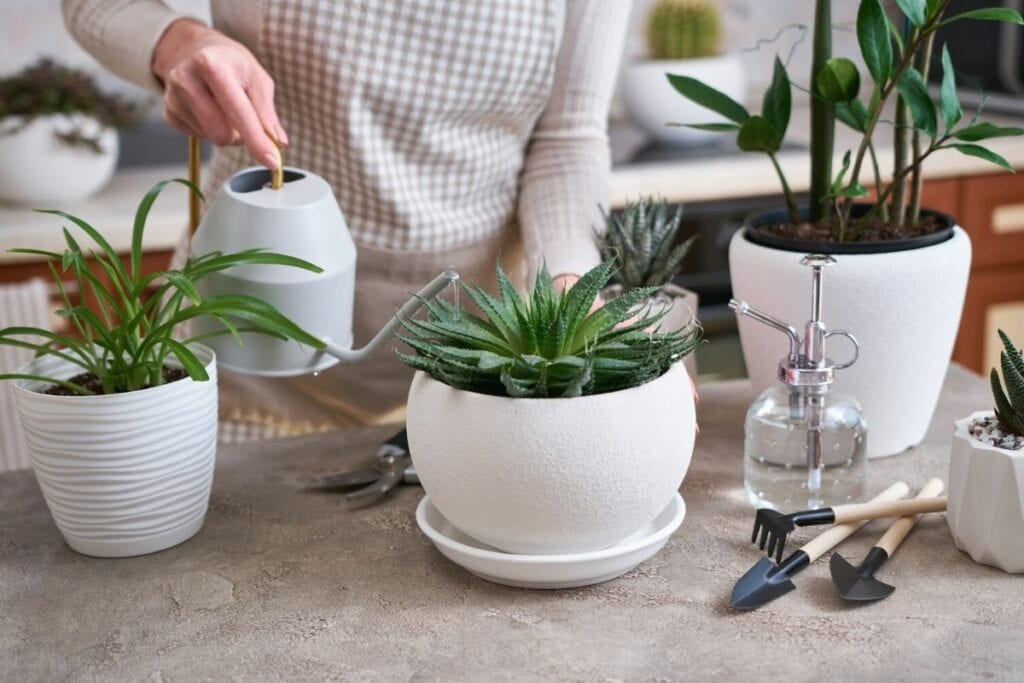
Poor Drainage
Another reason plants become overwatered is poor drainage. Haworthias need loose, fast-draining soil.
If there are too many moisture-retaining components like compost or peat moss, your substrate will stay unnecessarily moist for too long. Your plant will then have discolored leaves, similar to the symptoms of overwatering.
The ideal potting mix for Haworthias is rich in coarse sand and perlite or pumice, which altogether constitute 60-70% of the mix. Standard potting soil can make up for the remaining portion.
Incorrect Pot Size
Since most Haworthia plants have shallow roots, they do better in shallow pots. Too much soil in the pot means too much moisture, resulting in a higher risk of overwatering or root rot.
Haworthias grow slowly so they can stay in the same pot for up to 3 years before requiring repotting.
To find the right pot size, measure the root ball’s size and the plant’s width. Add an inch (2.5 cm) to find the right pot depth and 2 inches (5 cm) to the width.
For instance, if the root ball is 3 inches (7.6 cm) long and the plant is just as wide, go for a pot that’s 4 inches (10 cm) deep and 5-6 inches (12.7-15 cm) wide.
It’s also important to choose a pot that has drainage holes to keep the soil from being moist for too long.

Pest Infestation
Haworthias are resistant to most pests and diseases but may occasionally have problems with mealybugs. These pests feed on the succulent leaves and, in severe infestations, may leave brown spots or even discolor the whole foliage.
Constantly inspecting your plant for the presence of mealybugs will keep the problem under control. These pests are tiny and have a white, powdery coating made of wax. They may hide along the short stems or leaf undersides of Haworthia plants.
You can remove them by manually picking them off with tweezers and dropping them into a cup of soapy water. Alternatively, you can dab them with cotton swabs moistened with up to 70% isopropyl alcohol.
High Temperatures
Due to their desert origins, Haworthias are heat tolerant and can withstand temperatures up to 90 °F (32 °C). If the temperatures go higher for a long time, along with increased light intensity, the plant will be at a higher risk of dehydration.
The soil will dry out faster and the leaves will be more susceptible to sunburn, leaving them with dry, brown spots.
Plants grown outdoors in the summer will require more frequent watering. Check your potting mix more often to ensure it doesn’t dry out entirely. Water your plant deeply early in the morning to let the roots absorb enough water before the soil moisture evaporates.
In addition, it’ll help a lot to move your pot to a shadier spot or install shade covers over your garden plants during midday.
Frost Damage
Haworthias thrive in areas where temperatures remain between 65 and 90 °F (18 and 32 °C) all year round. They can survive outdoors as long as the nighttime temperatures don’t fall below 40 °F (4 °C).
Frost damage can cause the leaves to shrivel and turn yellow. Eventually, the yellowed leaves will appear mushy and brown or black.
You must inspect your plant for chances of recovery in early spring. If you see signs of new growth, you can cut off the damaged sections using a sterile knife. Move your plant from full sun to partial shade as it recovers from the damage, and ensure proper watering.
To prevent frost damage, move your plants indoors before the temperatures fall too low. Haworthias continue growing during fall and winter, albeit more slowly.
Keep indoor temperatures within the optimal range for Haworthias, and keep your pot away from drafty windows or doorways.
Improper Fertilization
You don’t need to fertilize Haworthias as much as other houseplants. Over-fertilization can cause fertilizer burn and dehydrate the roots. As a result, your plant won’t be able to absorb enough moisture, and the foliage can shrivel, dry out, and turn brown.
Haworthias grow slowly and need fertilizer only during the growing season. The growing season can vary based on their origins. Those that naturally grow in areas with higher rainfall in winter are likely to grow actively from late winter to late spring.
On the other hand, wild Haworthias in locations where rainfall is more abundant in summer grow actively from early spring to mid-summer. The plant will enter a resting period as temperatures rise in late summer. Some may continue to grow in the fall if the temperatures remain warm right before a frost.
In your household, where temperature and humidity levels and water availability are almost constant, your plant will grow actively throughout spring. During this time, feed your plant a 3-1-2 NPK granular fertilizer only once—ideally at the beginning of spring.
If your plant shows signs of growth and flowering in the fall, you can add supplemental fertilization using the same fertilizer only once.
Improper Humidity
Haworthias are not very sensitive to humidity fluctuations as long as the other environmental parameters, such as light intensity, water, and temperature, remain within optimal levels.
As natives of arid regions, Haworthias thrive in low to moderate humidity levels ranging from 25-50%. This makes them suitable houseplants because comfortable indoor humidity is around the same range.
Intense sunlight and high temperatures can make low humidity unbearable for Haworthia plants. The soil will dry out faster, and the plant will transpire more, leading to dehydration and brown foliage.
On the other hand, high humidity during low-light and low-temperature conditions will make your plant susceptible to overwatering problems. Your plant’s foliage will become brown and mushy.
It’s easier to monitor the humidity levels indoors using a hygrometer and maintain them using a humidifier or dehumidifier. Outdoors, you must adjust your watering accordingly by increasing the watering frequency during hot, dry days or reducing it on wet, humid days.
Proper Care and Maintenance
Despite the large variations in the appearances of members of the Haworthia genus, they share similar care requirements:
- Sunlight: They like full sun or at least six hours of direct sunlight daily but will do well indoors with 4 hours of direct sunlight. Opt for an east-facing windowsill for indoor plants or a roofed porch or balcony for outdoor plants.
- Water: They are drought-tolerant and need partially dry (but not bone-dry) soil between waterings. Wait until half the potting soil is dry before watering again.
- Soil: They prefer loose, fast-draining soil, rich in coarse sand or perlite. The soil pH should also be close to neutral (around 6.0-7.0).
- Pot size: Most species like shallow pots due to their shallow root system, except for a few that have thicker roots, such as H. retusa. Check the root system of the species you have to determine the best pot size. Give one inch (2.5 cm) of soil space below the root ball. The pot should also be 2 inches (5 cm) wider than the plant foliage.
- Temperature: Keep the temperature between 65 and 90 °F (18 and 32 °C) as much as possible.
- Humidity: Indoor humidity levels of 30-50% are suitable for Haworthias. You can lower the humidity by improving air circulation using an electric fan. On the other hand, you can increase it by placing the pot over a pebble tray with water or grouping your plant with others that share the same humidity and light requirements.
- Protection from Pests: Inspect your plant regularly to prevent pest problems, if any, from going out of control. Checking your plant’s foliage and stem every time you water is enough to control pest issues and identify any other problems before they become irreversible.
Final Thoughts
Many issues can cause Haworthias to turn brown. The major causes include incorrect growth parameters, such as improper watering, light intensity, soil quality, temperature, and humidity. Other reasons include mealybug infestation and over-fertilization.
Although Haworthias can survive suboptimal conditions for a while, the damage can become irreversible when left unattended for too long. That’s why it’s crucial to keep an eye on your plant.
Inspecting your plant once a week or every time you water it should be enough to promptly detect and address any issues that occur before they go out of hand.

